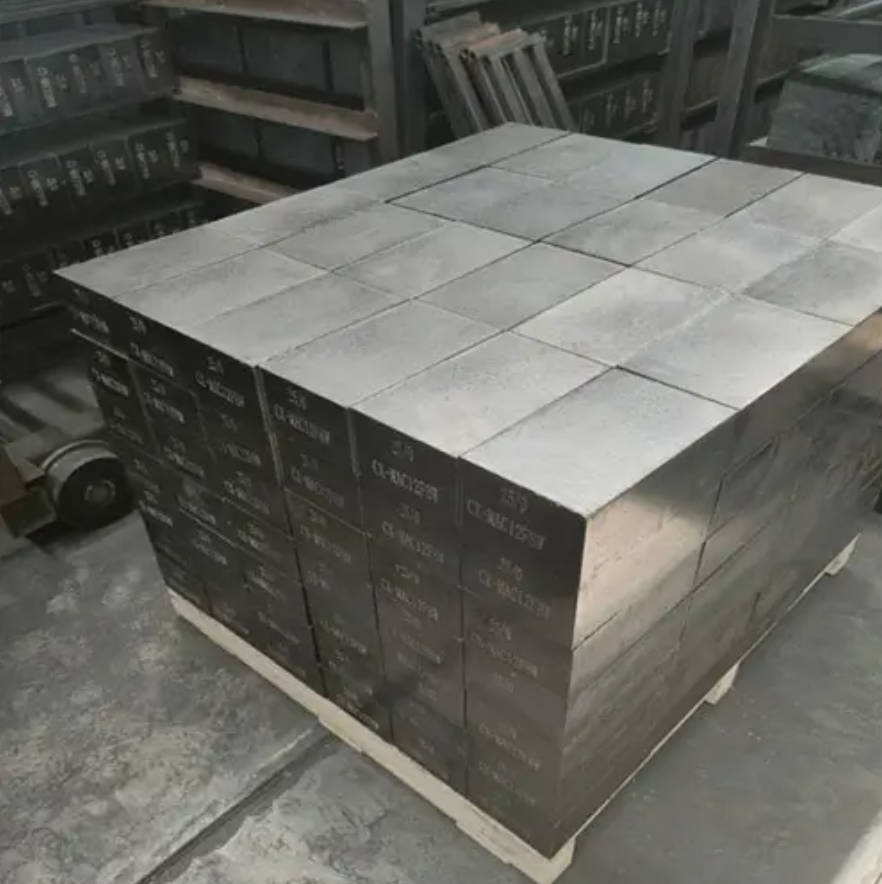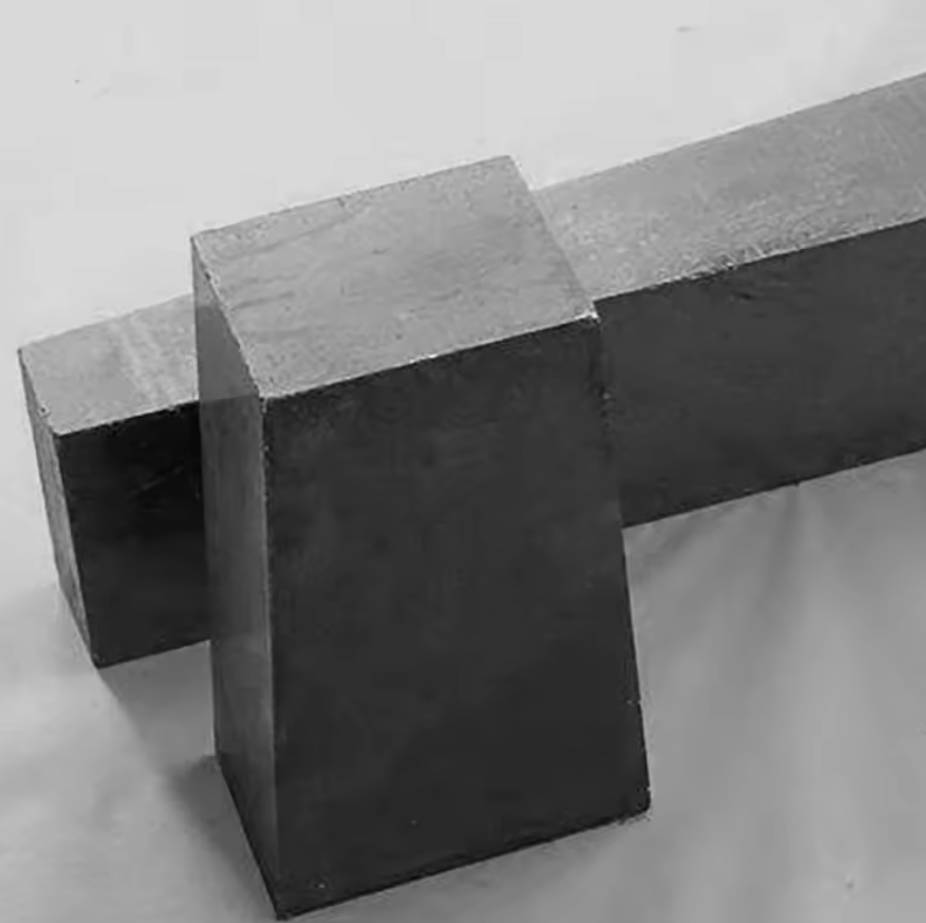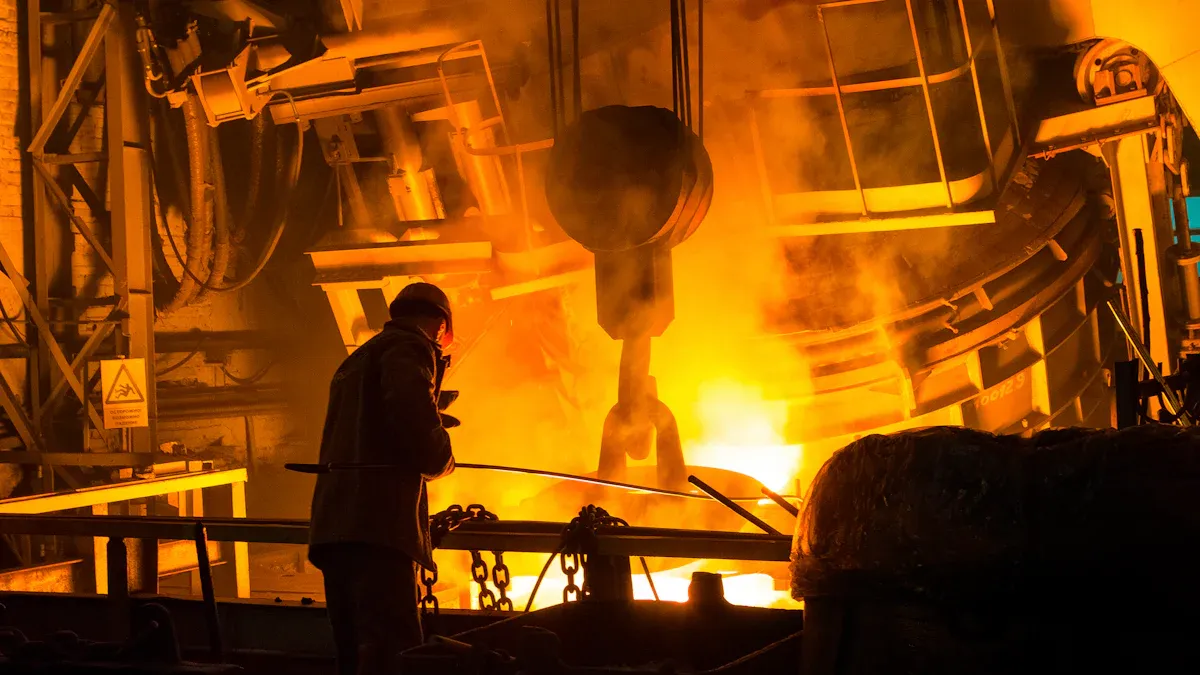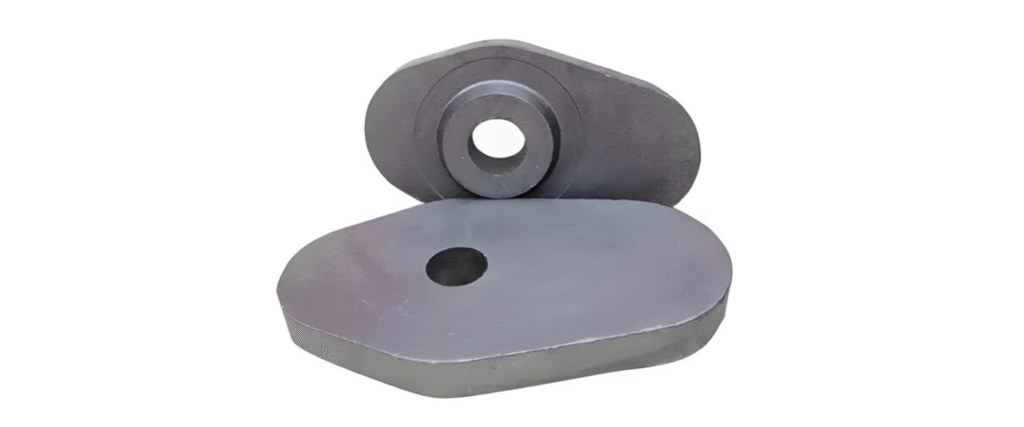
When picking materials for hot places, you should know what makes each type different. The big difference between magnesia carbon brick and aluminum magnesia carbon brick is that aluminum is added. This change affects how the brick deals with heat, how strong it is, and how well it lasts. Aluminum gives the brick new features, so it works better for some uses. Choosing carefully helps you get the best results for your needs.
Key Takeaways
- Magnesia carbon brick has magnesium sand and graphite. This makes it good for high heat and fast temperature changes.
- Aluminum magnesia carbon brick has alumina in it. Alumina makes it stronger and helps it resist damage from chemicals and heat.
- Use magnesia carbon brick when temperatures change quickly, like in steel furnaces and ladles.
- Pick aluminum magnesia carbon brick for places with heavy weight and strong chemicals. It lasts longer and saves energy.
- Always think about what you need and how much you can spend before choosing between these two bricks.
Composition

Magnesia Carbon Brick Materials
Magnesia carbon brick has two main parts. One part is magnesium sand. This comes from magnesite ore. The other part is graphite, which is a kind of carbon. These bricks are used in places with very high heat, like steel furnaces.
- Magnesium Sand: This helps the brick handle heat and stops rust. Magnesium sand has magnesium oxide. It stays strong even when it gets hotter than 1500°C.
- Graphite: Graphite is shiny and black. It helps the brick not crack when the temperature changes fast.
Tip: If you need a brick that can take heat and quick changes, magnesia carbon brick is a good pick.
Here is a simple table that shows what is in the brick:
| Material | Purpose | Typical Percentage |
|---|---|---|
| Magnesium Sand | Heat resistance | 60-80% |
| Graphite | Thermal shock resistance | 10-20% |
| Binder | Holds materials together | 5-10% |
Image suggestion: Show a picture of magnesia carbon brick. Label the magnesium sand and graphite. This helps you see how the parts mix together.
Aluminum Magnesia Carbon Brick Materials
Aluminum magnesia carbon brick has something extra. It still has magnesium sand and graphite. But now it also has alumina. Alumina is made from aluminum and oxygen. This makes the brick work better.
- Alumina (Al₂O₃): Alumina looks white and powdery. It makes the brick stronger. It also helps stop damage from chemicals and slag. Alumina slows down how fast heat moves through the brick.
- Magnesium Sand: This still helps with heat. It works with alumina to make the brick even stronger.
- Graphite: Graphite still keeps the brick safe from cracking when it gets hot or cold fast.
Note: Adding alumina makes the brick last longer in tough places. It does not get hurt by chemicals as much. It also keeps heat inside better.
Here is a table to help you see the differences:
| Material | Purpose | Typical Percentage |
|---|---|---|
| Magnesium Sand | Heat resistance | 50-70% |
| Alumina | Strength, corrosion resistance | 10-20% |
| Graphite | Thermal shock resistance | 10-15% |
| Binder | Holds materials together | 5-10% |
Image suggestion: Show a drawing of aluminum magnesia carbon brick. Label the magnesium sand, graphite, and alumina. This helps you see how the new part changes the brick.
How Aluminum Affects Composition and Performance
Adding alumina to magnesia carbon brick changes how it works. You will see some good changes:
- Better Strength: Alumina makes the brick harder. You can use it where heavy things push down.
- Improved Corrosion Resistance: Alumina keeps the brick safe from chemicals and slag. The brick does not get damaged as fast.
- Lower Thermal Conductivity: Heat moves slower through the brick. This means it keeps heat in better and saves energy.
- Longer Lifespan: The brick lasts longer in hard places. You do not have to replace it as often.
Alert: If you work with strong chemicals or need better heat keeping, aluminum magnesia carbon brick is a smart choice.
Here is a chart to compare the two types:
| Feature | Magnesia Carbon Brick | Aluminum Magnesia Carbon Brick |
|---|---|---|
| Main Ingredients | Magnesium sand, graphite | Magnesium sand, graphite, alumina |
| Strength | Good | Higher |
| Corrosion Resistance | Moderate | Excellent |
| Thermal Conductivity | Higher | Lower |
| Lifespan | Good | Longer |
You can see that alumina makes the brick better in many ways. If you need bricks for tough jobs, you should think about aluminum magnesia carbon brick.
Properties
When picking bricks for hot jobs, you should know how they work. The properties of magnesia carbon brick and aluminum magnesia carbon brick help you decide where to use them. Let’s see how they handle heat, fight damage, and stay strong.
Thermal Conductivity
Thermal conductivity means how fast heat moves through something. If a brick has high thermal conductivity, heat goes through it quickly. If it has low thermal conductivity, the brick keeps heat inside better.
- Magnesia carbon brick lets heat move faster. It does not keep heat inside as well. You might use it when you want heat to spread out.
- Aluminum magnesia carbon brick slows down heat. The alumina inside blocks heat and keeps the temperature steady. This type gives you better insulation.
Tip: If you want to save energy and keep heat in, pick aluminum magnesia carbon brick. It helps your furnace or kiln stay hot longer.
Here is a table to compare:
| Property | Magnesia Carbon Brick | Aluminum Magnesia Carbon Brick |
|---|---|---|
| Thermal Conductivity | Higher | Lower |
| Insulation | Moderate | Excellent |
Image suggestion: Draw arrows through each brick. Use thick arrows for magnesia carbon brick (fast heat flow) and thin arrows for aluminum magnesia carbon brick (slow heat flow). Show the insulation effect with labels.
Oxidation Resistance
Oxidation happens when oxygen reacts with the brick at high heat. This can hurt the brick and make it weaker. You want a brick that resists oxidation, especially where there is lots of air and heat.
- Magnesia carbon brick resists oxidation because of the graphite. But if there is a lot of oxygen, it can wear out faster.
- Aluminum magnesia carbon brick resists oxidation even better. The alumina forms a shield that protects the brick from oxygen. This brick lasts longer and gets less damage.
Alert: If your furnace or kiln has lots of air, aluminum magnesia carbon brick will last longer. It keeps its strength and shape better.
Here is a list of what helps each brick resist oxidation:
- Graphite slows down oxidation in magnesia carbon brick.
- Alumina gives extra protection in aluminum magnesia carbon brick.
Image suggestion: Draw both bricks with oxygen around them. Put a shield icon on the aluminum magnesia carbon brick to show extra protection.
Density and Strength
Density means how tightly packed the materials are in the brick. Strength tells you how much weight or force the brick can take before breaking.
- Magnesia carbon brick has good density and strength. You can use it where the brick needs to hold heavy loads.
- Aluminum magnesia carbon brick has even higher density and strength. The alumina makes the brick harder and tougher. You can use it where there is heavy machinery or strong impacts.
Note: If you need bricks for tough jobs, aluminum magnesia carbon brick gives you more strength and lasts longer.
Here is a table to compare density and strength:
| Property | Magnesia Carbon Brick | Aluminum Magnesia Carbon Brick |
|---|---|---|
| Density | Good | Higher |
| Strength | Strong | Stronger |
| Lifespan | Good | Longer |
Image suggestion: Draw a weight on each brick. Use a bigger weight for aluminum magnesia carbon brick to show it can take more force.
Summary of Properties
You can see that aluminum magnesia carbon brick gives better insulation, stronger resistance to oxidation, and higher strength. If you work in places with high heat, lots of air, or heavy loads, you should think about using aluminum magnesia carbon brick. It helps you save energy, protect your equipment, and replace bricks less often.
Tip: Always check your job site before picking a brick. The right properties help you get the best results and save money over time.
Applications

Magnesia Carbon Brick Uses
Magnesia carbon brick is used a lot in steel-making. These bricks do well with high heat and fast temperature changes. You can find them in:
- Steel ladles: These carry hot, melted steel.
- Electric arc furnaces: These melt old steel with electricity.
- Converter linings: These help turn iron into steel.
- Tundish linings: These move melted steel into molds.
Tip: Use magnesia carbon brick if you need something that handles heat and quick changes.
| Application | Environment | Benefit |
|---|---|---|
| Steel ladle lining | High heat, slag | Stops cracking from heat |
| Arc furnace wall | Fast temperature | Stays strong |
| Converter lining | Chemicals | Fights rust and damage |
Image suggestion: Show a steel ladle and an electric arc furnace. Point to where magnesia carbon brick is inside.
Aluminum Magnesia Carbon Brick Uses
Aluminum magnesia carbon brick is best where you need more strength and better heat keeping. You see these bricks in:
- Refining ladles: These need bricks that last and fight chemicals.
- Continuous casting tundishes: These need bricks that keep heat in and block slag.
- Steel-making furnaces: These use bricks for heavy work and hard hits.
- Non-ferrous metal furnaces: These need bricks that stop rust from other metals.
Alert: Pick aluminum magnesia carbon brick for longer life, better heat keeping, and stronger chemical resistance.
| Application | Environment | Advantage |
|---|---|---|
| Refining ladle lining | High heat, chemicals | Lasts a long time |
| Continuous casting tundish | Keeps heat, blocks slag | Better insulation |
| Non-ferrous furnace wall | Metal corrosion | Extra protection |
Image suggestion: Show a refining ladle and a continuous casting tundish. Point out where aluminum magnesia carbon brick is used to keep heat and stop damage.
Note: Choose your brick by looking at your work area. If you deal with strong chemicals, heavy weight, or need more heat kept in, aluminum magnesia carbon brick is better. For fast temperature changes and less chemical risk, magnesia carbon brick is a good choice.
Advantages and Limitations
Magnesia Carbon Brick Benefits
Magnesia carbon brick has many good points. It works well in very hot places. You can trust it in steel-making jobs with quick heat changes. The graphite inside helps stop cracks when it gets hot or cold fast. This brick also stands up to damage from slag and metal. It is simple to put in because it stays strong and steady.
Key benefits:
- Handles quick temperature changes
- Fights damage from slag and metal
- Simple to put in and swap out
- Stays strong when it is very hot
Tip: Pick magnesia carbon brick if you want a brick you can trust for steel furnaces or ladles.
Aluminum Magnesia Carbon Brick Benefits
Aluminum magnesia carbon brick gives even more good things. The alumina inside makes the brick stronger and helps it last longer. It keeps heat in better because heat moves through it slowly. This helps save energy in your furnace or kiln. Alumina also keeps the brick safe from chemicals and oxidation. You can use these bricks where there are heavy loads and hard hits.
Advantages include:
- Stronger and more packed together
- Keeps heat in and saves energy
- Great at fighting chemicals and oxidation
- Lasts longer in tough places
Alert: Use aluminum magnesia carbon brick for jobs with strong chemicals, big machines, or when you need to keep heat inside.
Limitations
Both bricks have some downsides. You should think about these before you choose. Magnesia carbon brick can wear out faster if there is lots of oxygen or strong chemicals. Aluminum magnesia carbon brick costs more and can be harder to get. Make sure to check your budget and where you will use the bricks.
| Brick Type | Limitation |
|---|---|
| Magnesia carbon brick | Wears out faster with oxygen |
| Aluminum magnesia carbon brick | Higher cost, less availability |
Note: Always pick the right brick for your job. Think about where you will use it, how much it costs, and how long you want it to last.
You can easily notice how magnesia carbon brick and aluminum magnesia carbon brick are different. If you want a brick that handles heat well and is easy to put in, use magnesia carbon brick. If you need better heat keeping and want the brick to last longer in tough places, pick aluminum magnesia carbon brick.
- Magnesia carbon brick is good for steel furnaces and ladles.
- Aluminum magnesia carbon brick is stronger and protects better from chemicals.
Always choose the brick that fits your job for the best results.
FAQ
What is the main difference between magnesia carbon brick and aluminum magnesia carbon brick?
Aluminum magnesia carbon brick has alumina in it. This makes the brick stronger and better against chemicals. Magnesia carbon brick does not have alumina.
Where should you use aluminum magnesia carbon brick?
Use aluminum magnesia carbon brick where there are strong chemicals, high heat, or heavy loads. It is good for refining ladles, continuous casting tundishes, and non-ferrous metal furnaces.
Does aluminum magnesia carbon brick last longer than magnesia carbon brick?
Yes, aluminum magnesia carbon brick lasts longer. Alumina helps the brick stay strong against heat and chemicals. You will not need to replace it as much.
Can you use magnesia carbon brick in all steel-making jobs?
You can use magnesia carbon brick in many steel-making jobs. It is best when you need heat resistance and fast temperature changes. It might wear out faster with lots of oxygen or strong chemicals.
Is aluminum magnesia carbon brick more expensive?
Aluminum magnesia carbon brick costs more. The alumina makes the price higher. Check your budget and needs before you choose this brick.


